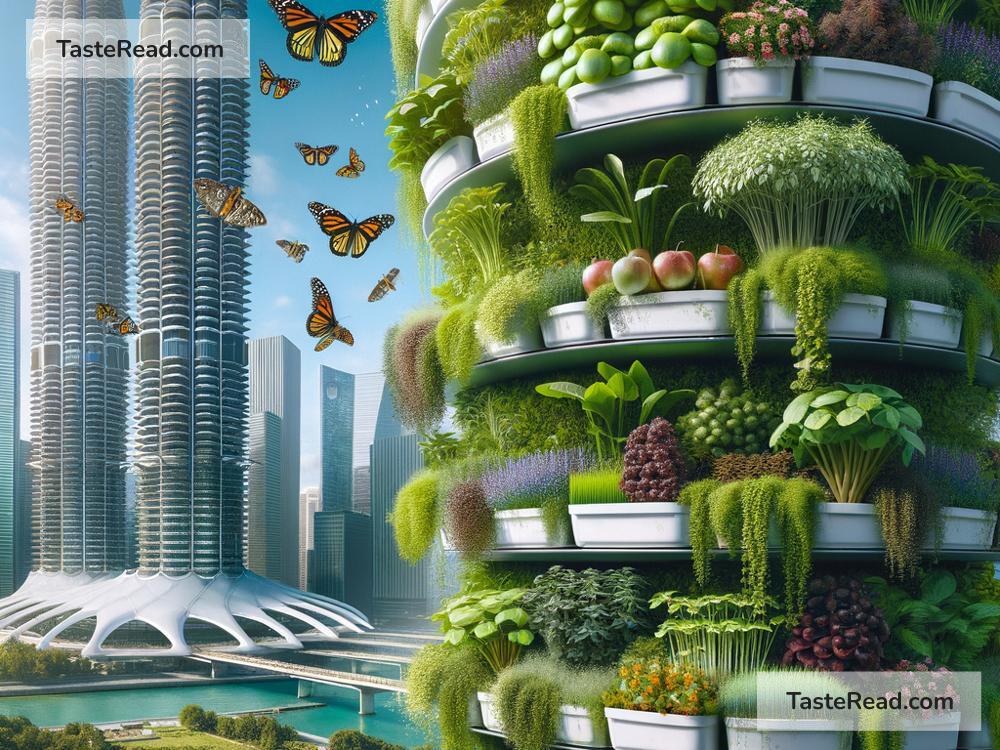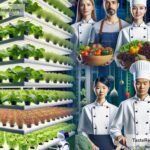The Future of Food and Regenerative Ecosystems
Food is something we all depend on daily. It’s not just what fills our plates; it’s deeply connected to nature, the environment, and how we live. But as the global population grows and climate changes, the way we produce and consume food needs to evolve. The future of food lies not only in innovation but in working with nature—this is where regenerative ecosystems come into the picture. Together, they hold the key to feeding everyone while healing the planet.
The Problem with Current Food Systems
Today, much of our food comes from industrial agriculture. This method focuses on growing large amounts of crops and raising livestock as quickly and cheaply as possible. While this approach has succeeded in providing food for billions, it has also caused serious damage to the environment. Here are some of the problems caused by industrial farming:
-
Soil Depletion: Overfarming and the use of chemical fertilizers harm the soil, making it less healthy over time. Healthy soil is essential for growing nutritious crops and storing carbon, which helps fight climate change.
-
Deforestation: Forests are being cut down at an alarming rate to make space for farmland. This destroys ecosystems, causes wildlife to lose their homes, and releases carbon stored in trees into the atmosphere.
-
Pollution: Pesticides, fertilizers, and animal waste often end up in rivers and oceans, harming water quality and marine life.
-
Climate Change: Industrial agriculture contributes heavily to greenhouse gas emissions. From methane produced by cattle to energy-intensive farming practices, the system we rely on to feed ourselves is also warming the planet.
Simply put, our current food system isn’t sustainable. If we keep going this way, we risk running out of fertile soil, clean water, and even food itself. To meet future challenges, we need to rethink how food is grown, distributed, and consumed.
What Is Regenerative Agriculture?
Regenerative agriculture offers a solution to these problems. It’s a way of farming that works with nature instead of against it. The goal is not just to sustain the land but to restore and improve it over time. Here are some key principles of regenerative agriculture:
-
Healthy Soil: Farmers use techniques like crop rotation, composting, and cover crops to build soil health. Healthy soil is full of nutrients, stores water better, and captures carbon from the atmosphere.
-
Biodiversity: Regenerative farming encourages planting a mix of crops (rather than just one type) and supporting a variety of animal and insect species. This creates stronger ecosystems that are more resistant to pests and diseases.
-
No Chemicals: Instead of relying on synthetic fertilizers and pesticides, regenerative farming uses natural methods to improve yields. For example, some farmers use grazing animals to fertilize the land and remove weeds.
-
Carbon Sequestration: Regenerative practices help trap carbon in the soil, which reduces greenhouse gases in the atmosphere and slows climate change.
The Role of Ecosystems in Food Production
Food doesn’t just come from farms—it’s the result of deeply interconnected natural systems. Forests, rivers, oceans, and grasslands all play a role in supporting agriculture. However, when these ecosystems are damaged, food production suffers.
Regenerative ecosystems go a step further than regenerative agriculture. They balance food production with the health of the entire environment, supporting biodiversity and sustainable living. For example:
-
Mangroves and Wetlands protect coastlines, store carbon, and provide habitats for fish and seafood—all of which are crucial for global food supply.
-
Forests provide shade, help control water cycles, and support pollinators like bees. Without pollinators, farmers wouldn’t be able to grow many crops.
-
Oceans supply billions of people with fish, but overfishing and pollution threaten this vital food resource. Regenerative practices in aquaculture (fish farming) can keep oceans thriving.
By focusing on ecosystems, farmers, fishers, and environmentalists can work together to grow food in ways that restore balance to the natural world.
The Future of Food: Innovation and Tradition
To make our food systems truly sustainable, we need to combine ancient wisdom with modern technology. Indigenous communities have long practiced land stewardship and regenerative farming systems, proving that food production can live in harmony with nature. On the other hand, science and technology open exciting new doors to solve global challenges. Here are some ideas shaping the future of food:
-
Vertical Farming: Growing crops in layers inside buildings uses less space and resources than traditional farming.
-
Lab-Grown Meat: Meat grown from animal cells in labs could reduce the need for raising livestock, easing pressure on land and reducing methane emissions.
-
Alternative Proteins: Insects, algae, and plant-based proteins could become staple foods, providing nutrition while easing the environmental burden of traditional meat production.
-
Artificial Intelligence (AI): AI can help farmers monitor crops, predict weather patterns, and optimize resources like water and fertilizer.
-
Regenerative Business Models: Companies are starting to adopt regenerative practices in their supply chains. From coffee to chocolate, brands are committing to work with farmers who care for the land.
A Hopeful Vision for the Planet
Imagining the future of food isn’t just about fancy technologies or groundbreaking discoveries. It’s about working with Earth’s natural processes to create systems that are better for both people and the planet. Regenerative agriculture and ecosystems show us a way forward—one where we can meet global food demands while healing the environment.
The choices we make today as consumers, farmers, businesses, and governments will shape the future. By supporting sustainable practices, trying new foods, and protecting natural ecosystems, we can play a part in building a healthier world. The future of food isn’t just about survival; it’s about creating thriving communities in harmony with nature.
Let’s work together to grow food that restores the Earth, not depletes it. After all, our health is deeply tied to the health of the planet—and the future of food looks brighter when we care for both.


